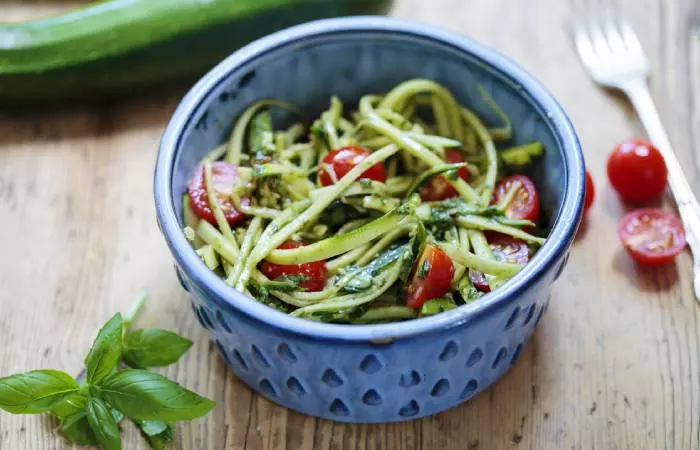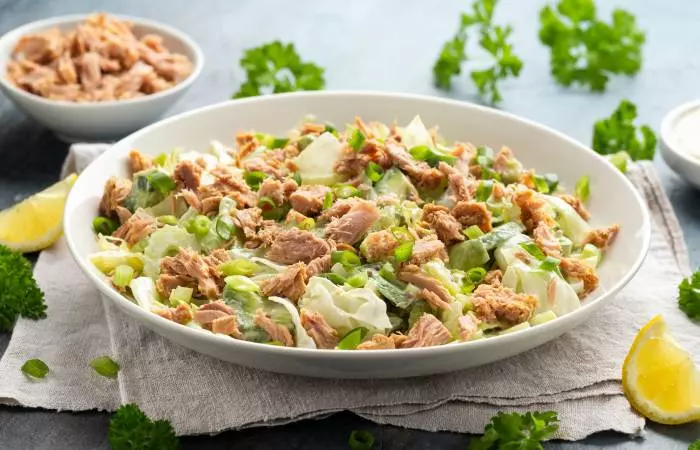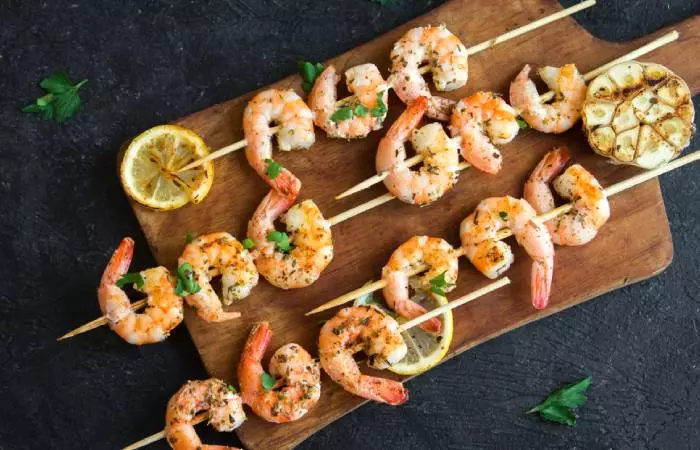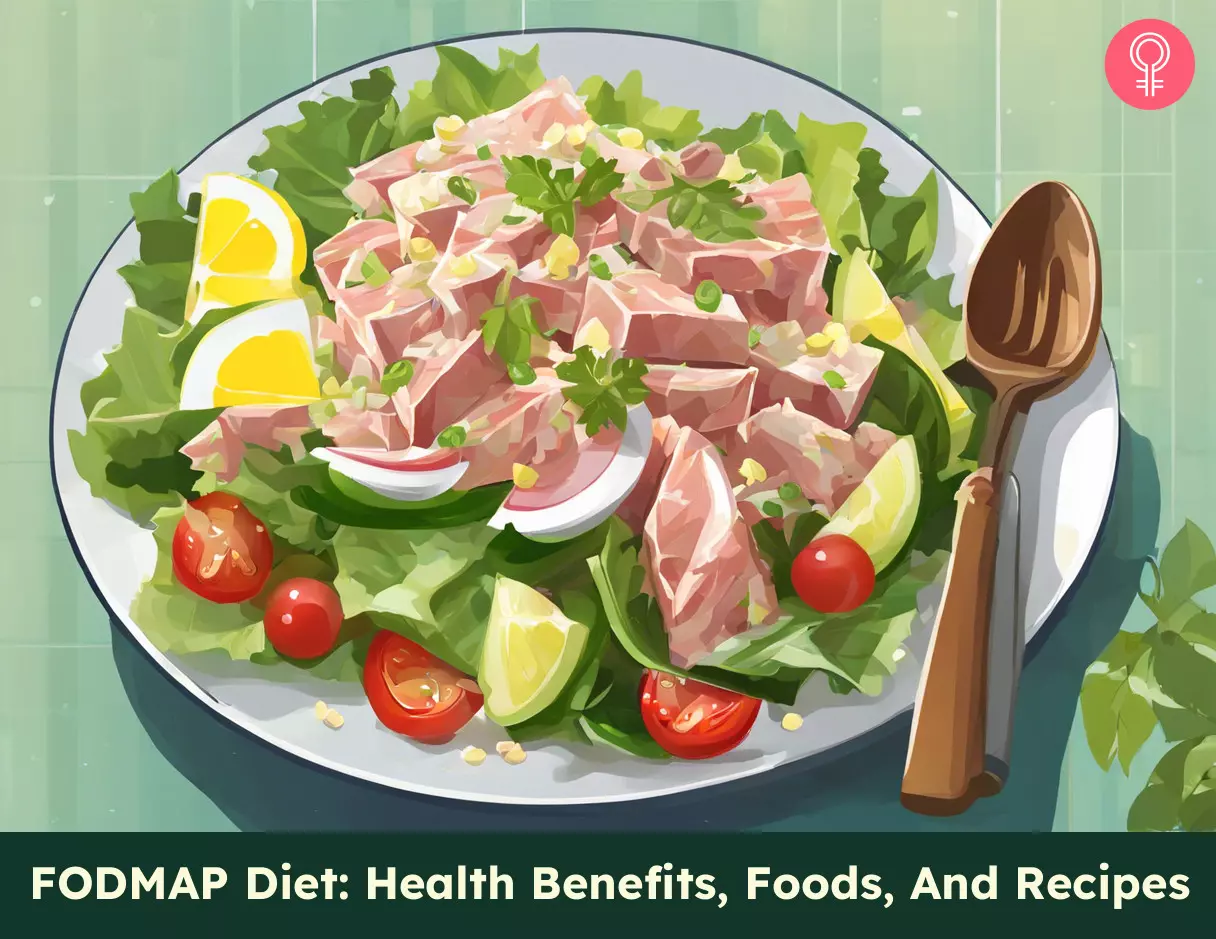What Is A FODMAP Diet?
The FODMAP diet is designed to help manage the symptoms of digestive issues like irritable bowel syndrome (IBS) and other gastrointestinal disorders and allow the gut to heal. FODMAP stands for “fermentable oligosaccharides, disaccharides, monosaccharides, and polyols.” These short-chain carbohydrates do not get digested easily and are poorly absorbed in the small intestine, causing digestive issues in some people. The FODMAP diet involves a three-phase approach (1): So, a low FODMAP diet promotes the healing of the gut, helping reduce abdominal discomfort and multiple associated issues. Scroll down to learn more about the benefits of this dietary approach.
Health Benefits Of A Low-FODMAP Diet
1. May Help Manage IBS Symptoms
A study conducted by the Department of Gastroenterology, Monash University, Australia, found that a diet low in FODMAPs effectively reduced symptoms like bloating, gas, and abdominal pain associated with irritable bowel syndrome (IBS) (2). This diet may also help improve the symptoms of other gastrointestinal problems and quality of life in people with IBS (3), (4), (5). Therefore, this dieting strategy is often recommended as part of IBS diets to help manage the condition.
2. May Reduce Constipation
Constipation is one of the common symptoms of IBS. Some foods high in FODMAPs also contain fiber, which is beneficial for preventing constipation. However, replacing high-FODMAP foods with suitable alternatives (low-FODMAP, high-fiber foods) may help improve this condition. But remember, consulting your healthcare provider is important to ensure the right balance of fiber intake to prevent constipation (6), (7).
3. May Aid In Weight Management
Restricting high-calorie, processed foods as a part of a low-FODMAP diet may help with weight management (6). However, limited research is available in this regard. If you want to lose some pounds with a low-FODMAP diet, consult your doctor to understand your dietary needs before making any changes to your diet. In addition, a well-planned FODMAP diet may also help improve symptoms associated with Crohn’s diseasei A chronic inflammatory bowel disease that primarily affects the lining of the gastrointestinal tract and causes ulcers and scar tissue. and celiac diseasei A chronic autoimmune disorder caused by an adverse reaction to gluten (a protein found in wheat, barley, and rye). (8), (9). The following sections highlight the foods to be eliminated and consumed while following the FODMAP diet. Scroll down and take a look.
High-FODMAP Foods To Avoid
According to studies, up to 86% of people with IBS may experience gas, bloating, abdominal pain, and diarrhea when they consume high-FODMAP foods. Here is a list of some common high FODMAP foods (10):
Fruits: Peaches, pears, apples, avocados, prunes, watermelon, persimmon, nectarines, mango, cherries, plums, apricots, blackberries, and boysenberries. Vegetables: Sweet potato, asparagus, snow peas, cauliflower, beetroot, mushrooms, savoy cabbage, leeks, artichokes, onion, snap peas, okra, bitter melon, broccoli, shallots, and butternut squash. High-lactose Dairy Products: Sour cream, cottage cheese, certain commercial yogurts (high lactose, non-fermented), ice cream, and ricotta cheese. Legumes: Soybeans, red kidney beans, baked beans (haricot and navy beans), pinto beans, lentils, chickpeas, fava beans, and black-eyed beans. Grains: Wheat-based products (cereal, pasta, bread, biscuits, and waffles), barley, rye, and amaranth. Sweeteners: Honey, sorbitol, mannitol, lactose, fructose, high fructose corn syrup, and molasses. Beverages: Soy milk, oat milk, soft drinks (with high fructose), fortified wines, coconut water, rum, fennel or chamomile tea.
Low-FODMAP Foods To Eat
Here is the list of common foods that you can have on a low-FODMAP diet (10):
Fruits: Bananas, grapes, kiwi fruit, olives, oranges, cantaloupe, lemons and limes, mandarins, passion fruits, strawberries, all melons (except watermelon), and papaya. Vegetables: Capsicum, green beans, carrots, cucumbers, tomatoes, bell peppers, bok choy, yams, potatoes, zucchini, eggplant, lettuce, celery, parsnip, collard greens, and parsley. Nuts And Seeds: Pecan, walnuts, almonds, hazelnuts, peanuts, Brazil nuts, chia seeds, pumpkin seeds, sesame seeds, sunflower seeds, caraway, and pine nuts. Grains: Quinoa, rice (white and brown), wheat-free grains, gluten-free bread or cereal products. Low lactose Dairy Products And Alternatives: Lactose-free milk, fermented probiotic yogurt, almond or rice-based milk, hard cheeses (parmesan, cheddar, and Swiss), and feta cheese. Protein Sources: Tofu and tempeh, skinless chicken and turkey, lean cuts of pork and beef. Sweeteners: Maple syrup, stevia, and sugar. Beverages: Water, green tea, coffee (in moderation), and herbal teas (peppermint). Condiments And Seasonings: Salt, pepper, mayonnaise, vinegar, mustard, and lemon juice.
Once you have an idea about what foods to eat and avoid, it’s best to plan your meals. It is recommended to consult a registered dietitian to ensure your nutrient requirements are met. Below is a sample 3-day diet plan and food suggestions as per your specific condition to help you understand how you may plan your meals. Take a look.
FODMAP Diet Plan
1. 3-Day FODMAP Diet Plan
2. FODMAP Diet For IBS
The small intestine does not absorb FODMAPs as they are nondigestable carbs (6). So, eat less of the following food groups to improve IBS symptoms:
Legumes and crucifers (red cabbage, broccoli, etc.), as they contain oligosaccharides (galacto-oligosaccharides and fructans) Mushrooms and Dairy products, as they contain disaccharides (lactose) Honey, dates, and sugar beets, as they contain monosaccharides (fructose) Fruits like apples, pears, and peaches as they contain polyols (sorbitol and mannitol)
3. FODMAP Diet For Diverticulitis
If you are struggling with diverticulitis, your dietitian may suggest following low-fiber or clear-liquid diets to improve the symptoms (11). Low-Fiber Diet: This diet plan helps reduce the strain on the digestive system. A low-fiber diet may include:
Cooked spinach, carrots, beets Canned fruits without skin Olive oil White rice or white pasta Fruit and vegetable juices Dry, low-fiber cereals Pumpkin or yellow squash without seeds
Clear Liquid Diet: This diet helps relieve symptoms associated with diverticulitis (inflammation or infection in small pouches in the digestive tract) (12). This diet may consist of:
Clear broth Clear juices (without pulp) Gelatin Water Clear electrolyte drinks
4. FODMAP Diet For Constipation
A low-FODMAP diet helps reduce bloating, gas, and constipation symptoms (5). Here is a list of some common foods to eat and avoid:
Choose low-FODMAP fruits like kiwi, grapes, citrus fruits, and berries. Limit the intake of high-FODMAP veggies like cabbage, broccoli, and cauliflower. Consider taking probiotics like yogurt. Consume soluble fiber-rich foods like oatmeal, chia seeds, and psyllium husk.
In addition, avoid lactose (almond or lactose-free milk) as a part of your FODMAP diet for constipation.
5. Vegan FODMAP Diet
Many vegan foods are low in FODMAPs. They include:
Leafy greens like spinach, kale, and lettuce Nuts and seeds Rice and gluten-free grains Tofu and tempeh Berries, grapes, citrus fruits Carrots, zucchini, bell peppers Quinoa
Even though the FODMAP diet foods list may appear extremely restrictive, you can still prepare delicious foods with the available options and treat your tastebuds. Scroll down to learn some simple recipes you can try at home.
FODMAP Diet Recipes
1. Zucchini Noodles
Ingredients
4 medium-sized zucchinis ½ cup of shredded Parmesan cheese 2 medium-sized tomatoes, chopped ¼ – ½ teaspoon of crushed red pepper flakes (optional) 3 tablespoons of extra virgin oil 1 tablespoon of minced garlic 1 teaspoon of cornstarch 5-6 basil leaves 2 teaspoons of cold water Salt to taste
How To Prepare To Prepare The Sauce: Note: Avoid adding red pepper flakes or other spices if they trigger your IBS symptoms.
2. Tuna Salad
Ingredients
5 oz. of canned tuna 1 stalk of celery, diced ¼ cup of mayonnaise ½ tablespoon of Dijon mustard 2 tablespoons of fennel 1–2 tablespoons of chopped parsley, chives Salt and pepper to taste
How To Prepare
3. Grilled Shrimp
Ingredients
1-½ oz of raw shrimp ¼ teaspoon of black pepper ¼ teaspoon of cayenne pepper 2 tablespoons of olive oil ½ teaspoon of kosher salt ½ teaspoon of garlic powder ½ teaspoon of smoked paprika
How To Prepare What you eat can have a major impact on your body. Like any other restrictive diet, the FODMAP diet also has several side effects. Scroll down to learn in detail.
FODMAP Diet Side Effects
The FODMAP diet is restrictive and may lead to reduced intake of some important nutrients like dietary fiber and essential vitamins and minerals (6). Long-term restriction of these nutrients may lead to several adverse effects like nutrient deficiencies and disordered eating. Hence, it is important to consult your healthcare provider or dietitian before starting the FODMAP diet to learn how to customize this plan according to your dietary needs and to implement it safely to avoid its side effects. Is coconut considered a low-FODMAP food? Yes. According to Monash University, Australia, coconut is considered a low-FODMAP plant-based food (13). Is turmeric a low-FODMAP food? Most herbs and spices come under the low FODMAP list when they are consumed in moderation. In the same way, turmeric is low FODMAP food when consumed in moderation. Always consult a dietitian to determine the amount of spices you may consume safely suitable for your condition. How to season food without onion and garlic? Season food using alternative herbs and spices like basil, thyme, oregano, or ginger for flavor enhancement. How long is the elimination and reintroduction phase of the FODMAP diet? The elimination phase typically lasts 2-6 weeks, while the reintroduction phase can vary but usually takes several weeks to a few months. How do you eat out while on the FODMAP diet? When eating out, focus on plain protein sources and non-cruciferous vegetables, and request modifications to omit high-FODMAP ingredients from your meal. Are gluten-free breads appropriate for the FODMAP diet? Gluten-free breads can be suitable for those with gluten intolerance or celiac disease, but they may still contain high-FODMAP ingredients, so it is important to check labels carefully. What breads are low FODMAP? Low-FODMAP bread options include spelt sourdough bread, wheat-free multigrain bread, and certain types of white or whole wheat bread with specific ingredients like spelt, oats, or millet.
Illustration: FODMAP Diet: Health Benefits Foods And Recipes
The FODMAP diet is unlike all traditional diets. Watch this video to understand how it may help manage digestive discomfort and improve your overall well-being.











